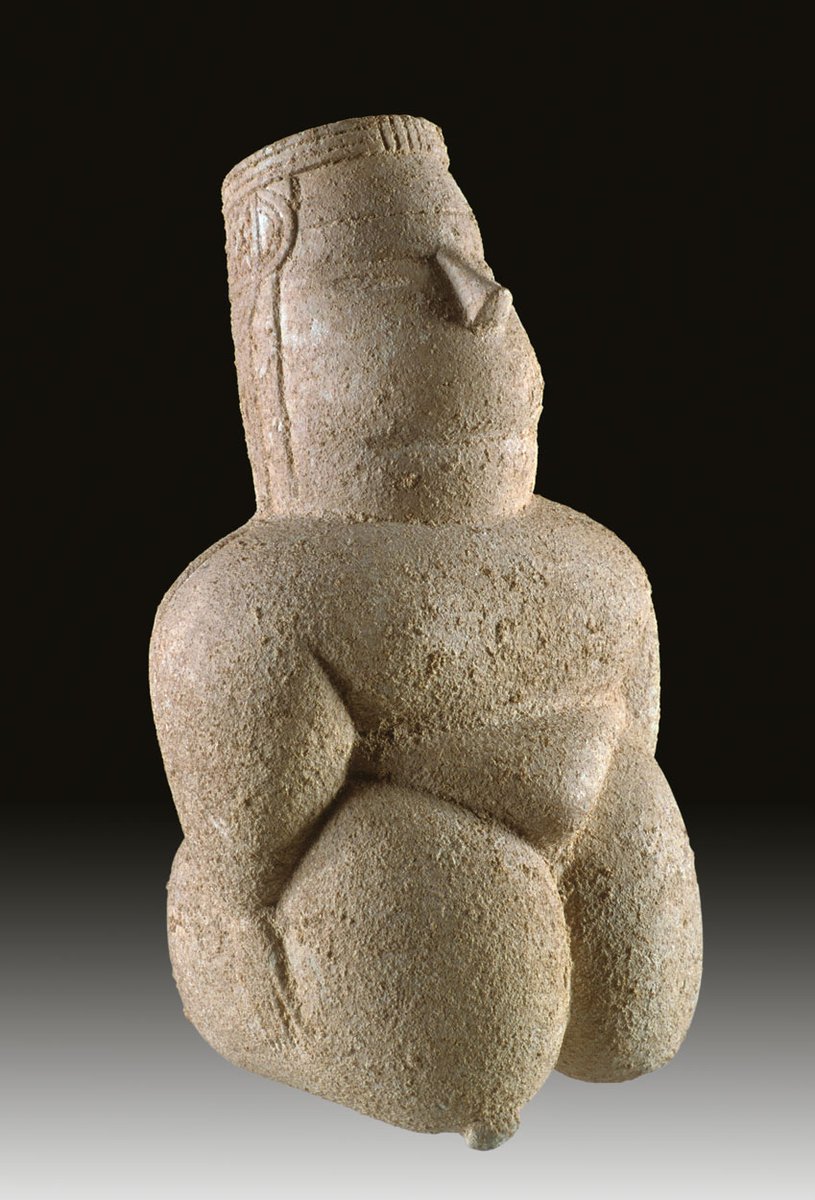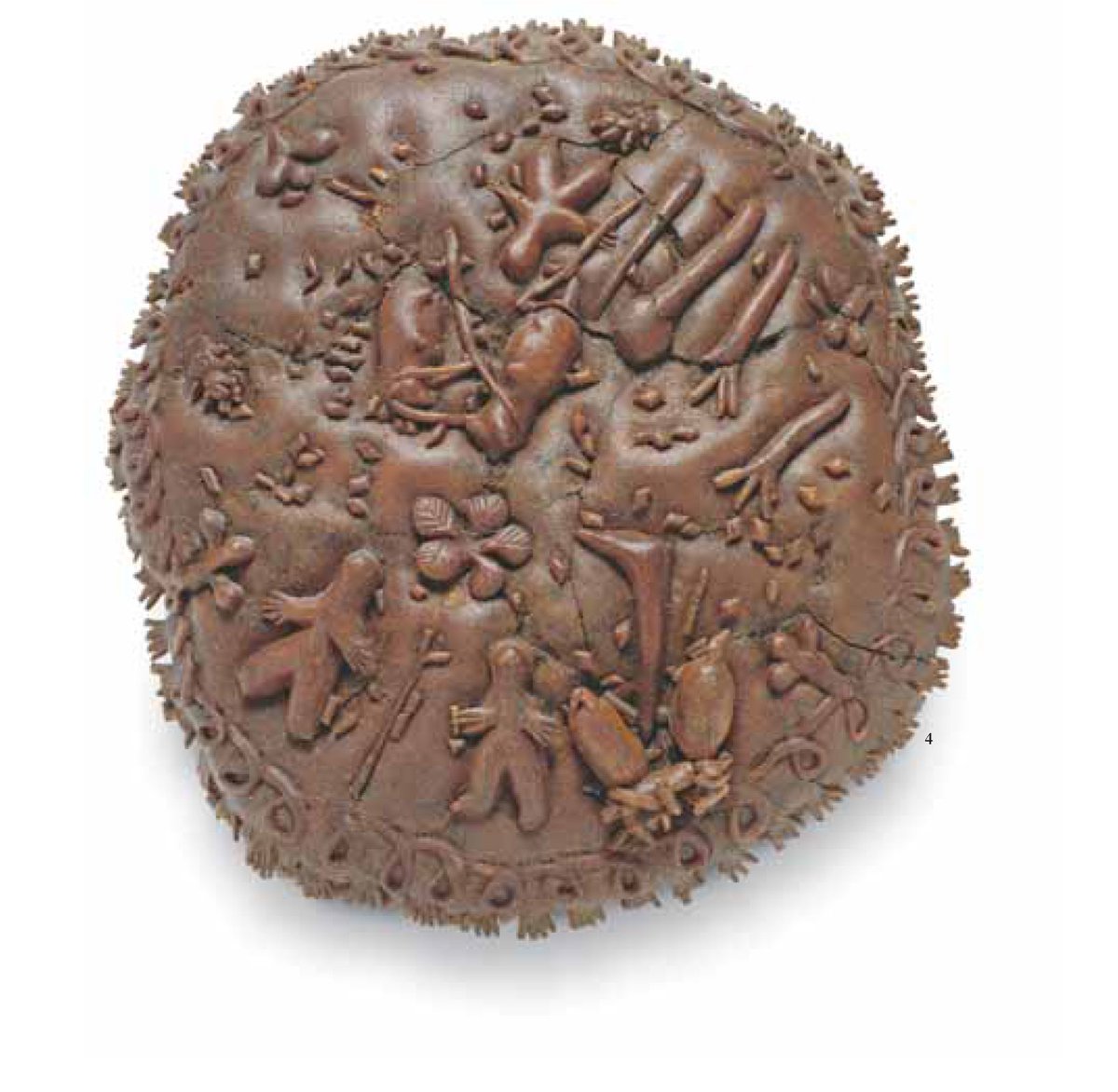
**PRENURAGIC SARDINIA – part 1: the culture**
First thread regarding the history of Prenuragic Sardinia. Next part will be about the domus de janas.
First thread regarding the history of Prenuragic Sardinia. Next part will be about the domus de janas.

The first human remains in Sardinia date back to the Mesolithic Age, that is 10,000-6,000 BCE, and found mostly in caves.
Around the 6,000BCE, the first Indo-Europeans arrived in Europe, bringing the tradition of agriculture and stationary life.
Around the 6,000BCE, the first Indo-Europeans arrived in Europe, bringing the tradition of agriculture and stationary life.

In the early Neolithic, we find corded ware in Sardinia too and a thorough use of the obsidian, precious stone found in great measure around Monte Arci. Sardinians traded it and created fine blades, with little effort to find the first matter. 



During the Middle Neolithic, 4700-4100BCE, in Sardinia we have the rise of the Culture of Bonu Ighinu (or Bonuighinu). Thanks to the contact with Eastern populations, the cult of the Mother Goddess starts spreading. The first statuette that we have- 

-shows an anthropomorphic Mother Goddess, known today as Venus from Macomer.
Later statuettes have rounder shapes, exalting the idea of a giver of life. It's the example of the Mother Goddess found in the hands of an inumate in Cuccuru Is Arrius, in the Sinis peninsula.


Later statuettes have rounder shapes, exalting the idea of a giver of life. It's the example of the Mother Goddess found in the hands of an inumate in Cuccuru Is Arrius, in the Sinis peninsula.



This necropolis also gives us information on the kind of tombs which were used. In fact this person was found buried in a pit grave, dug vertically and furnished with food, utensils, weapons and the statuette.
There's a "little" transitional phase that is referred to as the -
There's a "little" transitional phase that is referred to as the -

-Culture of San Ciriaco, which leads to the Late Neolithic, 4000-3000BCE. This is the period of the Culture of Ozieri, well-known for its ceramics and peculiar constructions. In this period we start seeing the first villages and the domus de janas, collective tombs.
The domus de janas will have another thread for more detailed explanation. They are tombs with very small entrances, excavated in the rock. Sardinians were masters in this and dug out these tombs in all the Sardinian territory.
From this period derive also more stylised versions


From this period derive also more stylised versions



-of the Mother Goddess, with abstract and triangular shapes, highlighting only the breasts.
There's a site that still holds many mysteries. It's the Altar of Santo Stefano, which doesn't have a clear date but nearby domus de janas make people think it can be of this same period.


There's a site that still holds many mysteries. It's the Altar of Santo Stefano, which doesn't have a clear date but nearby domus de janas make people think it can be of this same period.



It presents stones with peculiar circular, triangular or square shapes engraved, probably some kind of niches for religious offerings. A series of circular holes led some to think about some sort of lunar calendar. 

During all this time, Sardinia was at the centre of Mediterranean trading and influences from east and west. From West, Celtic and Druid land, arrived the megalithic culture. Since the end of late Neolithic, we see menhirs and dolmen rising everywhere in Sardinia. 





Menhirs often side already sacred sites; dolmens (two vertical and a horizontal stones) are somewhat rarer.
This is the age of metals. Iron, silver, copper are all present in Sardinian territory and again Sardinians trade them. The Copper Age dates approximately to 3300-2200BCE-


This is the age of metals. Iron, silver, copper are all present in Sardinian territory and again Sardinians trade them. The Copper Age dates approximately to 3300-2200BCE-



This is the period of Sub-Ozieri culture, transition which leads to the Cultures of Filigosa and Abealzu. Menhirs get fancy and get engravings, decorations, glyphs that in part are still mysterious.
We have menhirs differentiated in male and female ones, some have eyebrows-

We have menhirs differentiated in male and female ones, some have eyebrows-


others bear daggers (the male ones). Some show a peculiar sign ⬇️ that archaeologists interpreted as a dead person, offered to the Mother Goddess. We find this sign also in domus de janas.
The Prenuragic Altar of Monte d'Accoddi dates to this period too, the only "ziggurat-like"


The Prenuragic Altar of Monte d'Accoddi dates to this period too, the only "ziggurat-like"



-construction in the Mediterranean. The site shows domus de janas, Mother Goddesses, decorated menhirs and probably altars for sacrifices.
For more information about Monte d'Accoddi, here is a whole thread about it:
For more information about Monte d'Accoddi, here is a whole thread about it:
https://twitter.com/DrWatson_writer/status/1364976340961800198?s=19
As we reach the end of the Copper Age, we have the Culture of Monte Claro, characterised by potteries decorated with parallel lines.
In this period we have also megalithic walls, like in Monte Baranta, probably for defensive use of each tribe against another.


In this period we have also megalithic walls, like in Monte Baranta, probably for defensive use of each tribe against another.



We finally enter the Bronze Age (2500-2100BCE), which brings from Europe the Beaker culture. In Sardinia we see some of it only in north Sardinia, with the Culture of Bonnanaro. This is characterised by simpler vases.
We have now left Prehistory behind and we're approaching the-
We have now left Prehistory behind and we're approaching the-
-Nuragic Era, typical of Sardinia which thanks to eastern (the Mother Goddess) and western (megalithism) influences, created a unique culture and which in total (Pre+Nuragic) counts up to 10.000 archeological sites in the whole Sardinia. 

• • •
Missing some Tweet in this thread? You can try to
force a refresh



























